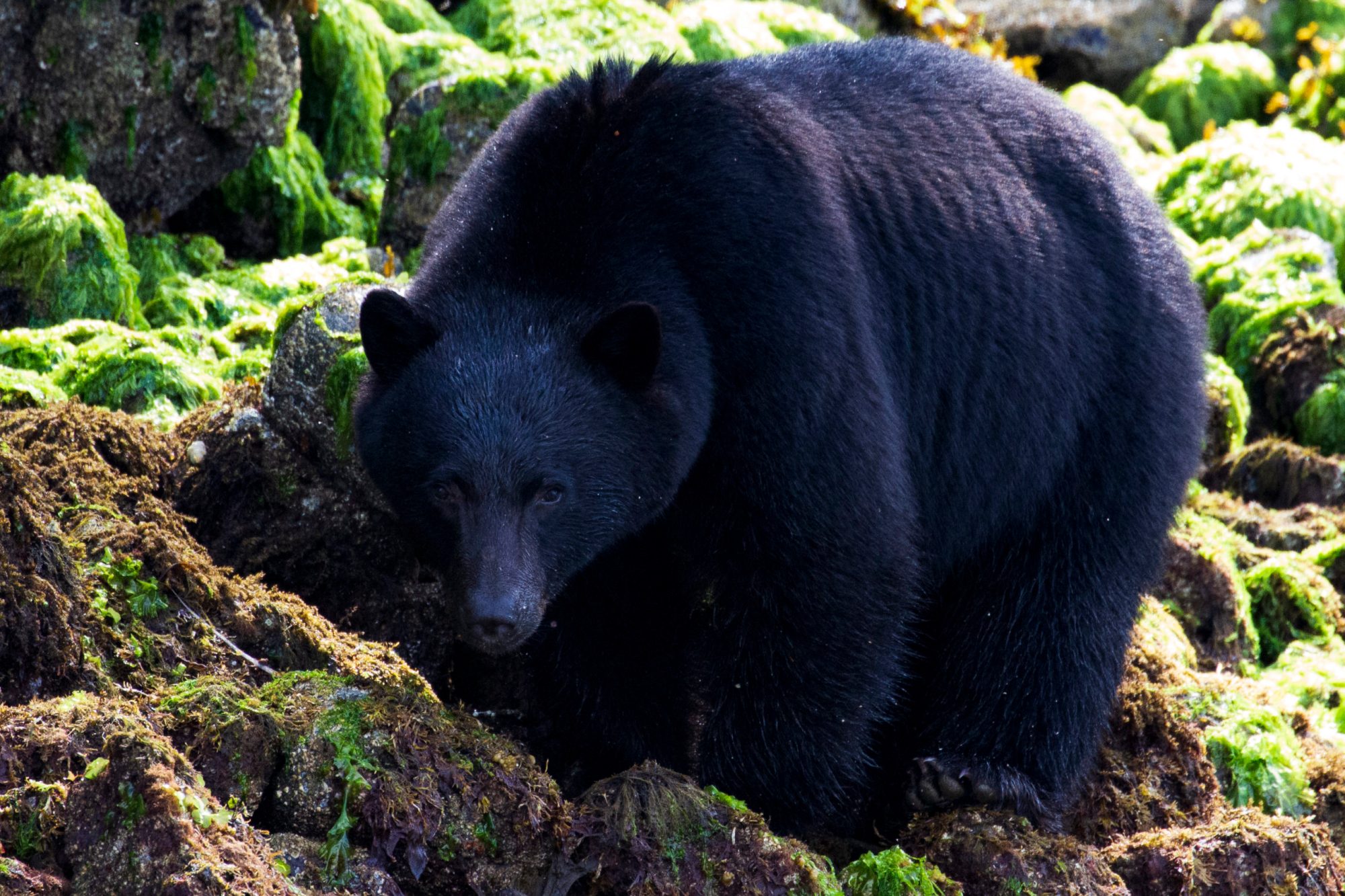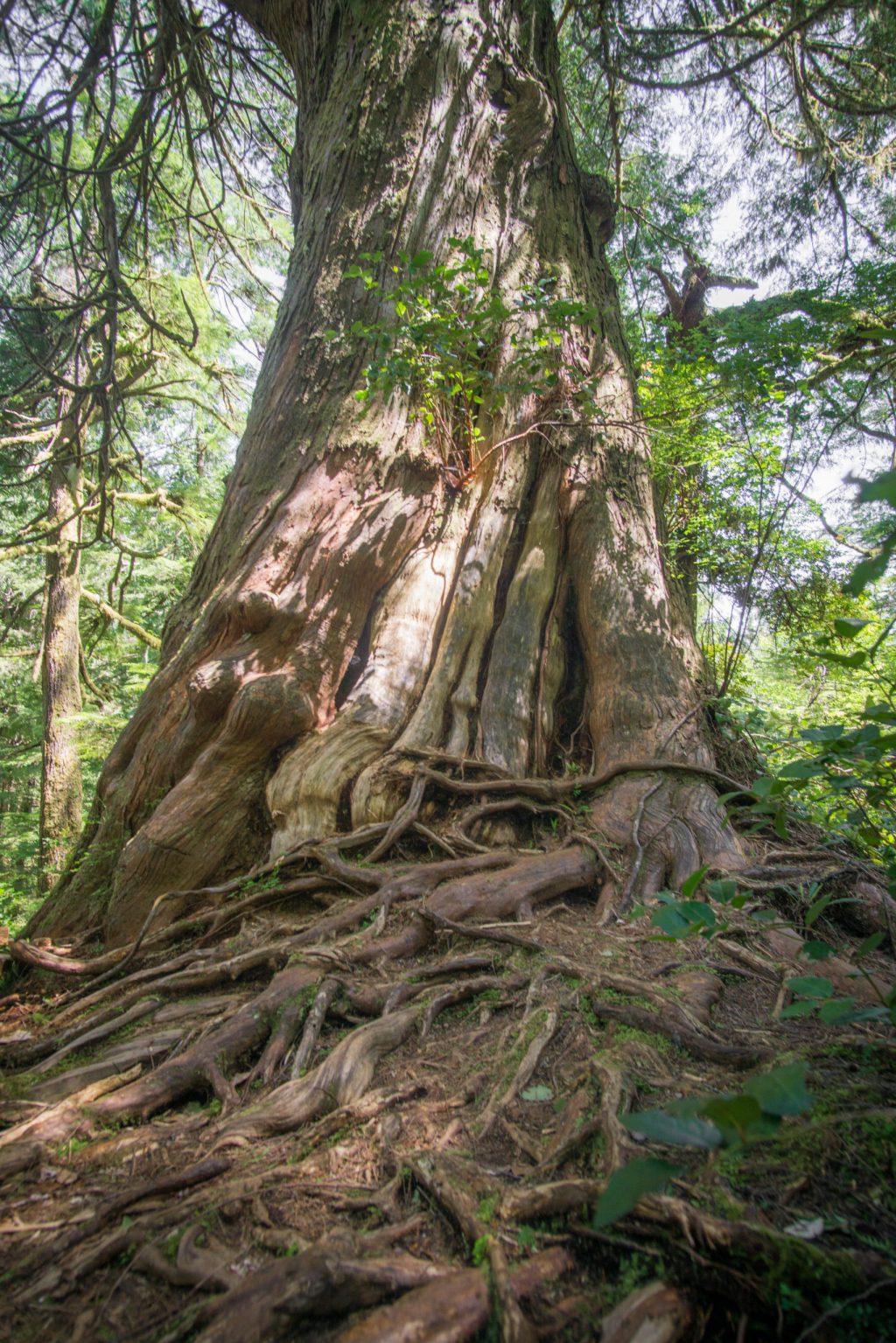The bears are back, but did they have a cozy winter?

Springtime is in the air. The sun seems to be shining with a little more warmth, the skunk cabbage is poking its first tightly furled spears up from the boggy pools on the forest floor, and the recently bare Salmonberry branches are suddenly winking with bright pink jewelry: the first flowers.
Bears are beginning to make an appearance along the shorelines in Tofino & Uculelet once again. Newly awake from their winter sleep, these bears are looking for early season sustenance to replenish their reserves. Skunk cabbage, tender young shoots and leaves beginning to appear on trees and bushes, young grasses and, of course, protein found along the shoreline like crabs, barnacles and other low-tide treats are all on the menu. Bears are omnivorous; around 85% of their diet is made up of vegetation, fruits and berries, the remaining 15% of insects, grubs, intertidal life, carrion and other prey.

A black bear mom and her cub walking along the shoreline in search of food. Photo by Matt Maran
The Denning Habits of Black Bears around Tofino & Ucluelet
Bears have a hugely seasonal lifestyle building up fat reserves throughout the summer and fall and relying on a good, secure den site to see out the winter.
During their winter denning phase a bear’s temperature and breathing rate will slow and no body waste is produced. Bears can actually recycle their own pee into useful proteins to maintain muscle and organ tissue while they sleep! A bear’s hibernating temperature does not fall as low as other hibernating small mammals like squirrels and chipmunks. Because a bear’s temperature will remain above 31℃ they can easily wake up from their sleep if they need to. Unlike smaller mammals which experience lower hibernating temperatures, bears can get going quickly if they’re disturbed or if they’re in danger. A female bear will even wake up to give birth to her cubs and then fall back to sleep afterwards.
Bears make their dens in hollows in the forest floor – they have a strong preference for areas of old-growth around Tofino & Ucluelet with lots of wide diameter red and yellow cedar trees with hollow centres, large fallen trees and root balls are also popular choices. Bears will drag clumps of moss, and bundles of shrubs into their dens to make them cozy and insulated against the winter weather – especially important for pregnant female bears expecting the arrival of cubs sometime in January.
Protecting Old-Growth Forests = Protecting Bear Dens

An old-growth cedar on Meares Island near Tofino. Photo by Adam Doolittle
As we lose more and more areas of old-growth forest on Vancouver Island the options for denning bears become less ideal. According to bear biologist Helen Davis who has spent most of her working life studying and advocating for bears in BC, black bears are still routinely using the stumps of old-growth trees that were logged up to 80 years ago for their winter den sites. These stumps are beginning to rot and won’t be in a good denning condition forever, yet current logging practices in British Columbia mean that we’re not allowing a new generation of trees to mature to a size where they could become good replacement dens before we remove them. Additionally, any wide diameter trees that would be good den candidates are often cut very close to the ground in today’s logging practices – leaving behind stumps that are too short for bears to use. A recent study found that only 2.7% of high productivity old-growth forests in British Columbia remain standing – and 75% of this is slated for logging in the near future.
Other Species At Risk Due To Logging Old-Growth Forests
It’s not only bears that are at risk if we continue to lose the last of British Columbia’s old-growth either – these ancient tracts of forest have incredibly high levels of biodiversity. Not only are they vital for threatened and endangered species that can only survive in old-growth like the spotted owl and marbled murrelet, but they also influence everything from the amount of rain collecting in the canopy to the productivity of the salmon streams running below their roots and branches.
While we wait and wait for the current provincial government to release its Old-Growth Strategy, there’s a housing crisis looming for black bears across the province. This is especially sobering considering the long-term implications it could have on the population of black bears as a whole given that cubs can only be successfully raised in secure, dry winter den sites.
Want to do something to help Vancouver Island’s black bears? Take action here:
https://www.ancientforestalliance.org/take-action/
Written by Ashley Hoyland. Naturalist for Jamie’s Whaling Station.
